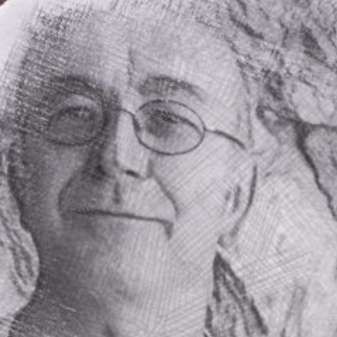There can be few openings which get as briskly down to business as Britten’s 1946 The Young Person’s Guide to the Orchestra. Peter Oundjian and the RSNO exploded into the minor-key Rondeau, which Britten had borrowed from Purcell’s 1695 Abdelazer Z. 750. This theme, having passed through the orchestra’s sections, then undergoes 13 variations intended to demonstrate the character and capabilities of each instrument, thereby fulfilling the Ministry of Education commission. It would be unfair to single out any individual or section as all were excellent in this sizzling performance. As always, I thrilled to the compositional genius and emotional complexity of the work’s climax, where the theme returns in much longer note values than the scurrying fugue already underway. The difference in note duration, along with its move to the major, seems to make it sound more generous than in its stormy opening statement. This mini concerto for orchestra was very well received and Oundjian acknowledged each section during the applause.
Anthony Bateman’s fine programme note suggested that Shostakovich’s 1959 Cello Concerto no. 1 in E flat major, although intended for Mstislav Rostropovich, was not exactly commissioned by him. Shostakovich’s wife had advised the cellist that the best way to secure a concerto would be to avoid mentioning it. Tactful restraint was rewarded by a work of gripping darkness and exhilarating technical feats. Argentinian cellist Sol Gabetta was the soloist in this searing performance. The second movement is really the work’s dark heart. Its opening, in which the RSNO string sound and balance was captivating, has in its third phrase one of the most astonishing pattern and surprise moments I’ve ever heard. Later, I could sense the audience’s held breath in a passage of eerie cello harmonics. The cadenza, which features some fearsome two-part writing, is billed as a separate movement but joins, by way of its gradual accelerando, the slow second movement to the faster third. Gabetta delivered this with a fierce commitment. Shostakovich’s biting irony colours the third movement and there is some ferocious writing – and here, some impressively ferocious playing. Although I know this work well I nevertheless jumped at Martin Gibson’s timpani strikes which closed the first and last movements. The response to this extraordinary performance was huge. In addition to well deserved adulation for Gabetta, there was also warm acknowledgement of the wonderful solo horn contribution of guest principal Andrew Budden.
Dvořák’s Symphony no. 7 in D minor (1884–85) mirrored the Britten in key, and the Shostakovich in presenting the defiant voice of a composer in a time of repression. The Czech nation’s struggle for self-determination was surely very much in the composer’s mind when he wrote: “God grant that this Czech music will move the world!” Difficult as it maybe to imagine now, the publisher Fritz Simrock forbade the Czech version of Dvořák’s Christian name – Antonín – from appearing on the title page, insisting on the German form, Anton. Despite this, and despite his personal sadness at the death of his mother, Dvořák was on something of a professional high as this commission from the Philharmonic Society of London suggests. The will to triumph shines through the music and certainly did in this performance. That said, there are also moments of great tenderness, such as the second movement, Poco adagio, and airy lightness, in the second theme of the opening Allegro maestoso.
The third movement, Scherzo: Vivace, employs a furiant, a Czech dance. This was the second Dvořák furiant I’d heard performed live in 48 hours and I was fascinated by the contrast. The former, in the finale of his String Quartet no. 13 in G, had a lighter touch than this genuinely furious take, which the RSNO really attacked. This was especially the case in its reprise after a breezier Trio theme. The characteristic two-against-three meter really came out as the movement neared its conclusion.
What impressed me most in the performance of this symphony was the delivery of triumph in the Finale. Triumph cannot stand alone and only rings true if preceding and contrasting emotions have successfully registered. Fury, melancholy, lightness and tenderness, struggle and joy had in turn their convincing say and this felt like the end of a varied yet cohesive journey. During the warm and sustained audience response Oundjian acknowledge the considerable contribution of ever-lyrical principal clarinet John Cushing and, again, the excellent Andrew Budden.


